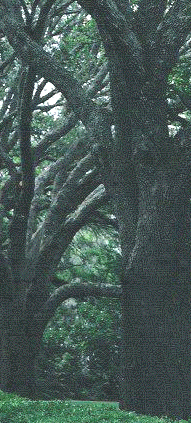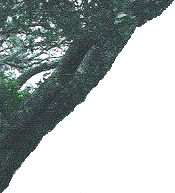Carbidopa 125mg salePropranolol is contraindicated in sufferers with bronchial asthma symptoms lyme disease buy 125mg carbidopa fast delivery, bradycardia symptoms before period buy discount carbidopa 300 mg, hypotension and congestive cardiac failure symptoms quivering lips order online carbidopa. Amitriptyline (25�200 mg 4 occasions day by day symptoms quiz order generic carbidopa pills, starting on the lower dose and increasing by 25 mg every 1�2 weeks if needed) and calcium channel blockers similar to flunarizine 5�10 mg daily have also been discovered to be efficient. Meningitis Meningitis is an infection involving the pia�arachnoid resulting within the collection of inflammatory exudate in the subarachnoid house and cerebrospinal fluid. It is due both to a systemic infection with organisms such as meningococci, pneumococci, viruses, and so on. The scientific presentation is normally a fulminant acute infection which progresses in a quantity of hours, a subacute an infection that progresses over several days and a chronic meningitis which evolves as a neurological syndrome and persists for more than four weeks. Acute bacterial meningitis, acquired in the community, is mostly due to Streptococcus pneumoniae (approximately 50% of cases), Neisseria meningitides (approximately 25%), group B streptococci and Listeria monocytogenes. The incidence of Haemophilus influenzaeinduced meningitis has decreased following close to universal immunization with the H. Hospital-acquired an infection following neurosurgical intervention is more commonly as a outcome of Staphylococcus aureus and coagulase-negative staphylococci. Chronic meningitis could be because of partially handled suppurative meningitis, Mycobacterium tuberculosis, Lyme illness among the bacterial pathogens; secondary or tertiary syphilis amongst spirochaetes; Cryptococcus neoformans, Coccidiodes immitis, Candida spp. The classic medical features embrace fever, headache and neck stiffness, that are seen in over 90% of instances. Other features include altered sensorium seen in 75% of cases, nausea, vomiting and photophobia. Seizures and features of raised intracranial stress may be associated and, in meningococcaemia, a typical pores and skin rash is seen. Neck rigidity, which is pathognomonic of meningeal irritation, is demonstrated or confirmed by examination of the affected person in the supine place. Resistance to passive neck flexion, presence of pain on passively extending the flexed knee with the thigh flexed on the abdomen (Kernig sign) and spontaneous flexion of the knees and hips induced by flexion of the neck (Brudzinski sign) are all classic indicators to be rigorously seemed for. In acute meningococcal (epidemic) meningitis papillitis because of a descending infective perineuritis is incessantly present; rarely papilloedema may develop. A attribute signal is the broadly open palpebral aperture, often associated with very infrequent blinking. Paralysis of the sixth nerve, often unilateral, is extra common than that of the third, though divergent strabismus because of the latter cause has been frequently reported. The pupils differ in size, usually showing miosis in the early phases and mydriasis when coma units in; lack of reaction to gentle is relatively uncommon. Sporadic acute basal meningitis may be associated with complete amaurosis with regular fundi and pupillary reactions, pointing to the motion of poisons on the higher visible centres. The blindness might persist for many weeks after the other signs subside, but sight could additionally be in the end restored. Chronic basal meningitis sometimes reveals the same characteristic, however in these circumstances optic neuritis and postneuritic atrophy might occur from secondary hydrocephalus and stress of the distended third ventricle upon the chiasma and tracts or meningeal adhesions within the chiasmal area. In meningitis of center ear origin, papillitis or papilloedema is often due to problems such as sinus thrombosis or cerebral abscess. When ocular paralysis happens, the sixth nerve is often affected, rarely the third (compare with intracranial abscess). The facial nerve is most incessantly involved, the paralysis often inflicting lagophthalmos. Chronic chiasmal arachnoiditis is a localized an infection in the meninges across the chiasma and optic nerves; the aetiology is obscure although sepsis of the nasal sinuses or sarcoidosis could account for some cases. A primary optic atrophy often develops bilaterally, with a central scotoma and irregular contraction of the visible fields, either concentrically or with bitemporal loss. In tuberculous meningitis a moderate diploma of papillitis is frequent (about 25%) and is usually bilateral. Bilateral third nerve paralysis is type of unknown, a point of distinction from syphilitic basal meningitis.
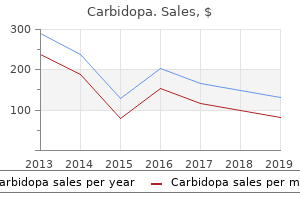
Purchase carbidopa once a dayInability to stand could require the patient to search help and attempt to shakira medicine carbidopa 300mg overnight delivery alleviate the state of affairs by constant adjustment of the extremities and head (titubation) symptoms urinary tract infection order carbidopa on line. Patients keep the ft too broadly aside or too carefully together treatment statistics 300 mg carbidopa for sale, with the pinnacle and physique deviated towards the side of the lesion during strolling medications causing tinnitus cost of carbidopa. Asynergy refers to the dearth of coordinated motion between muscle groups or movements that normally preserve the correct degree of harmony and easy and accurate sequencing. Asynergy of the muscle tissue of the mouth, pharynx, and larynx may result in disturbance of the mechanism that regulates respiration and phonation (dysarthria). This disturbance produces a peculiar form of speech, scanning (telegraphic) or staccato speech, which is a gradual, slurred, explosive, and ataxic speech with extended intervals between syllables and wrong pauses. Asynergy can also be manifested within the type of dysmetria, adiadochokinesis, hyperkinesia, and rebound phenomenon of Holmes. Dysmetria is the shortcoming to gauge the gap, vary, fee of velocity, or power of movement. Overshooting (hypermetria) or undershooting (hypometria) of the supposed goal could occur as a end result of a lack of appreciation of distance or range. Individuals could perform the act slowly or very rapidly with minimal or maximal power. Adiadochokinesis is the lack to carry out alternate successive pronation and supination of the forearm, opening and shutting of the fists, or tapping of the finger, or to correctly executing the finger-to-nose or heel-to-shin exams. In the fingerto-nose take a look at, because the examiner asks the patient to put his/her finger on his/her nostril, the finger begins to oscillate progressively and then violently because it approaches the nose. In heel-to-shin test, the affected person, whereas in supine place, is asked to contact the knee of one leg with heel of the other extremity after which transfer the heel downward in entrance of the shin to the ankle joint. Hyperkinesia is seen in the type of nonrhythmic, jerky, irregular, uncontrollable, coarse, to-and-fro actions of the limbs (kinetic or intention tremor) during the course of a movement, or upon command, as in the finger-to-nose and heel-to-shin checks. Rebound phenomenon of Holmes refers to the dearth of regular checks of agonist and antagonist muscle tissue and an inclination to overshoot the goal somewhat than stopping easily. Hypotonia (reduced muscle tone) results in weak, flabby, and fatigued muscular tissues (asthenia). The affected muscular tissues may not resist passive movements of the joints into excessive degrees of flexion or extension. The contraction and rest phases of actions turn out to be gradual, delaying the initiation of voluntary actions. When the patient is asked to outstretch his/her forearms, the outstretched forearm on the affected side assumes a pronated place and usually maintains a better place than the limb on the contralateral facet. Other cerebellar deficits include nystagmus, visual and ocular issues, hyporeflexia, macrographia, dementia, headache, nausea, and vomiting as well as vertigo (sense of rotation of self or environment). Cerebellar disease often produces anteroposterior or side-to-side movements of the setting and a sense of instability throughout walking. Occlusion of the subclavian artery, medial to the origin of the vertebral artery, by arteriosclerotic plaques may also produce vertigo, a weaker pulse, and decrease pressure in the upper extremity of the affected facet relative to the lower extremity. This outcomes from diversion of blood flow from the vertebral artery on the (intact) reverse side, which maintains a higher blood stress, to the vertebral artery on the occluded facet, with a lower blood pressure, and subsequently to the subclavian artery distal to the positioning of occlusion. Diversion of blood to the subclavian artery (stealing) from the vertebral artery is mostly exacerbated throughout physical effort (increased metabolic demand), resulting in manifestations of cerebellar ischemia, which embody vertigo and dizziness. Other deficits additionally seen in brainstem and cerebellar ischemia include diplopia (double vision), oscillopsia (sensation of oscillation of the viewed object), numbness, and hemiparesis. Occlusion or stenosis of the vertebral artery on one side not often slows the blood circulate to the brainstem or cerebellum if environment friendly collateral circulation in the neck in addition to symmetry of vertebral arteries are maintained. Stenosis of the basilar artery may cause signs, which range from vertigo, nausea, dysarthria (difficulty in speech), hemianesthesia, and paresis of conjugate eye movements, to dysphagia, diplopia, occipital headache, and vertical and horizontal nystagmus. Ocular and visible issues are the end result of disruption of the cerebello-vestibulo-ocular reflexes, including nystagmus, ocular dysmetria, disturbances of conjugate gaze, and diplopia. Nystagmus is a rhythmic oscillation of 1 or both eyes at relaxation or with ocular actions. The rapid corrective motion in the direction of the gaze is considered the fast element of cerebellar nystagmus.
| Comparative prices of Carbidopa | | # | Retailer | Average price | | 1 | Office Depot | 457 | | 2 | Dollar Tree | 713 | | 3 | OSI Restaurant Partners | 469 | | 4 | Safeway | 636 | | 5 | BJ'S Wholesale Club | 196 | | 6 | McDonald's | 881 | | 7 | Barnes & Noble | 225 | | 8 | Giant Eagle | 220 |
Buy carbidopa with visaForeign bodies from the cornea are removed underneath magnification using the slit-lamp or operating microscope treatment of scabies order 300mg carbidopa free shipping. The eye is anaesthetized and the surgeon holds the lids apart with the first and second fingers of his left hand medicine 7253 pill order carbidopa 125mg on-line, urgent slightly backwards so as to steady the globe treatment spinal stenosis order generic carbidopa canada. An attempt could first be made to take away the overseas physique by dislodging it with a sterilized spud medications similar to abilify order 110mg carbidopa visa. If repeated efforts fail a disposable hypodermic (26 or 27 gauge) needle ought to be used. The greatest care must be taken not to scrape the epithelium more than is absolutely necessary. Emery, steel and iron particles go away behind somewhat ring of brown stain, which ought to be scraped off if potential without too much trauma. In all circumstances, an antibiotic ointment ought to be utilized and the eye stored bandaged for a day. Special consideration must be paid to particles of stone, which show a higher tendency than steel to trigger infective ulceration, most likely as a end result of metallic particles are often sizzling and therefore sterile when they enter the eye. Occasionally, sharp steel and different particles penetrate deep into the cornea without perforating it. The efforts made to take away them could push them in still deeper or even into the anterior chamber. If the international body escapes into the anterior chamber it have to be removed by different methods. Every try ought to be made to defend the attention by educative notices and lectures and the availability of comfortable goggles. Injuries by blunt objects vary in severity from a simple corneal abrasion to rupture of the globe. Numerous lesions may outcome; certainly, each a half of the eye could additionally be so injured by a contusion as to seriously diminish imaginative and prescient. Moreover, in some cases, the modifications are delayed or progressive in order that in all instances a guarded prognosis should be given and the affected person stored beneath evaluate for months to years. Mechanism of blunt trauma eye: As a general rule, either the anterior segment of the attention in entrance of the iris�lens diaphragm, or the posterior half, is preferentially affected. Delayed problems such as secondary glaucoma, cataract, vitreous haemorrhage, retinal detachment or traumatic iridocyclitis might comply with. The various circumstances resulting from contusion or concussional damage are given in Table 24. This is acknowledged by distortion of the corneal reflex and by means of fluorescein. A small abrasion could heal spontaneously, while a larger requires a light cycloplegic and pad and bandaging of the attention for 24 hours. The abrasion, nevertheless produced, normally heals quickly, however is followed some days, weeks, and even months later by acute ache and lacrimation, typically on first opening the eyes within the morning. If the cornea is then stained with fluorescein an abrasion shall be discovered, usually at the authentic website however generally elsewhere, or there may be one or a bunch of vesicles. The attack quickly passes off with applicable treatment, however often recurs repeatedly, significantly on waking up within the morning. Early attacks must be treated in the identical manner as a simple abrasion, but if the attacks are repeated, debridement is indicated, whereby the free epithelium is removed and the eye padded for forty eight hours so that firm healing takes place. Cornea the cornea might undergo an abrasion, deep opacities may develop, or partial or full rupture may happen. The entire cornea is at first stained, the color various based on the duration of the situation. It may be reddish-brown or greenish; in the latter case the situation simulates dislocation of the clear lens into the anterior chamber. The cornea steadily and very slowly clears from the periphery in the course of the centre, the entire course of taking 2 years or more. Microscopically, there are myriads of minute, extremely refractile rods packed within the lamellae of the stroma, and typically spherical granules of pigment within the corneal corpuscles. These are derivatives of haemoglobin, which may or may not include iron and are removed slowly by phagocytic motion. In the absence of other causes of faulty imaginative and prescient, sight could ultimately be fully restored however is normally permanently impaired. If the rupture extends posterior to the ciliary body, mild cryotherapy could additionally be applied to forestall a future retinal detachment.
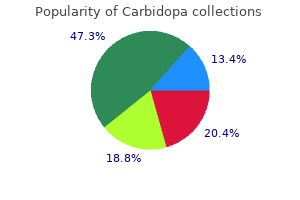
Order carbidopa with paypalThese fibers run close to the midline of the ground of the fourth ventricle treatment canker sore safe carbidopa 110mg, then extend laterally as the stria medullaris of the fourth ventricle symptoms week by week order carbidopa mastercard, and at last enter the cerebellum via the inferior cerebellar peduncle medications keppra cheap carbidopa 125 mg with amex. The sites of termination of the arcuatocerebellar fibers embody the vestibulocerebellum and the pontocerebellum medicine 773 generic carbidopa 125 mg otc. The tectocerebellar fibers convey auditory and visual data to the pontine nuclei after which to the spinocerebellum, via the superior cerebellar peduncle. Information conveyed by this crossed tract originates from the entire lower extremity, reaching the cerebellum via the superior cerebellar peduncle. The fibers of this tract cross once more within this peduncle and terminate within the ipsilateral spinocerebellum. Some trigeminal fibers additionally originate from the principal sensory and spinal trigeminal nuclei, which obtain tactile sensation, and convey this sensation to the anterior lobe by way of the inferior cerebellar peduncle. A series of neurons are involved, as a closed-circuit loop, in the transmission of impulses between the cerebellum, thalamus, and motor cerebral cortex. Cerebellum 91 Ventral spinocerebellar tract Rostral spinocerebellar tract Trigeminocerebellar tract Spinocerebellar tract Cerebellum Globose nucleus Dentate nucleus Ventral lateral and ventral anterior thalamic nuclei Emboliform nucleus. The cerebellar projection to the thalamus constitutes the principal tract within this peduncle. Note that some fibers additionally terminate within the pink nucleus and reticulotegmental and accessory oculomotor nuclei. Aminergic cerebellar afferents embrace fibers from the locus ceruleus and raphe nuclei that project to the cerebellar cortex through the superior and inferior cerebellar peduncles. They also sharpen the alerts and reduce the background exercise by enhancing the discharge of glutamate from the parallel fibers onto the Purkinje cells. Noradrenergic projections to the cerebellum inhibit Purkinje cells by -adrenergic receptor�mediated inhibition of adenylate cyclase within the Purkinje cells. Dopaminergic neurons to the cerebellum achieve origin from the ventral tegmentum and will act upon the D2 and D3 receptors of the molecular layer. Others originate from the cerebellar nuclei and project to the thalamus and the brainstem reticular formation. Neuronal axons of the vermal cortex extend to the vestibular and fastigial nuclei with a sure diploma of specificity. These nuclei additionally process information obtained via collaterals of some mossy and climbing fibers. There are A and B parallel zones of Purkinje cells in the vermis of the anterior lobe and easy lobule that project to the rostral part of the fastigial nucleus and the lateral vestibular nucleus, respectively. The caudal part of the fastigial nucleus integrates enter from the folium and tuber vermis, which includes visible impulses used to calibrate saccadic eye actions. The pyramis also initiatives to the identical areas that obtain input from the anterior lobe. Intermediate (paravermal) zones, which embody C1, C2, and C3, project to the interposed nucleus. C1 and C3 zones send fibers to the emboliform nucleus, whereas C2 projects primarily to the globose nucleus. Purkinje neurons of the lateral cerebellar cortex type D1 and D2 zones that ship axons to the caudolateral and rostromedial components of the dentate nucleus, respectively. The dentatorubrothalamic tract is formed by axons of the dentate nucleus, which runs throughout the superior cerebellar peduncle, and terminates in the ventral lateral and ventral posterolateral thalamic nuclei. Collaterals of this projection are also given to the red nucleus, oculomotor nucleus, and associated accent oculomotor nuclei (interstitial nucleus of and Cajal and nucleus of Darkschewitch). Efferents from the globose and emboliform nuclei project to the contralateral ventral posterolateral, intralaminar, and ventral lateral thalamic nuclei via the superior cerebellar peduncle. It also tasks to the lateral and inferior vestibular nuclei and to the nucleus reticularis gigantocellularis of the contralateral medulla by way of the uncinate fasciculus (hook bundle of Russel). There are also fastigial nuclear projections to the ventral lateral and ventral posterolateral thalamic nuclei. Cerebellar influences upon motor activity may be mediated via the fastigial projection to the ventral lateral nucleus of thalamus, the primary motor cortex, and the corticospinal tract. The lateral vestibular nucleus conveys this data to the spinal cord, regulating the motor activity of the antigravity muscle tissue. Cerebellum 93 gigantocellularis allows the fastigial nucleus to influence motor activity through the medullary reticulospinal tract. This connection serves as an extra route by which the fastigial nucleus regulates motor exercise.
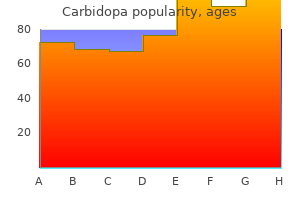
Buy carbidopa 110 mg fast deliverySuch sickled purple cells tend to symptoms 8 weeks pregnant order generic carbidopa obstruct capillaries and this results in treatment renal cell carcinoma cheap carbidopa online mastercard infarction medicine hat alberta canada best purchase carbidopa, notably within the periphery of the retina medicine for anxiety buy carbidopa 300 mg cheap. Pathogenesis: Normal adult haemoglobin is a tetramer formed from haemoglobin items. Normal grownup haemoglobin is designated a2 b2, totally different genes being liable for the production of the a- and the b polypeptide chains. In sickle cell haemoglobin the molecule is identical to regular haemoglobin, except that within the sixth place of the b polypeptide chains, the amino acid valine is current instead of glutamic acid. In haemoglobin C, the amino acid lysine may have been substituted for the glutamic acid in the sixth place of the b polypeptide chains. The former begins with occlusion of the peripheral arterioles resulting in neovascularization and vitreous haemorrhage. The retinopathy consists of vascular tortuosity, central retinal artery occlusion, central retinal vein occlusion, angioid streaks, sunburst spots (focal retinal pigment epithelial hypertrophy, hyperplasia and migration resulting from intraretinal and subretinal haemorrhages) and optic atrophy. Leakage of serum into the vitreous cortex, which occurs close to vascular lesions, causes vitreous group which can, in turn, result in traction. Treatment consists of sector photocoagulation to trigger involution of the neovascular lesions. Vitreoretinal surgical procedure may be required in the remedy of retinal detachment however anterior section necrosis is a danger which must be borne in thoughts in such cases. Cotton-wool spots are seen in about 50% of circumstances, although their aetiology is uncertain. Patients are open to infection from cytomegalovirus, Toxoplasma and herpesvirus, in addition to different opportunistic organisms. Retinopathy in Toxaemia of Pregnancy this occurs late in being pregnant, exceptionally before the sixth month and practically all the time within the ninth month. As the blood strain rises, oedema seems making it resemble hypertensive retinopathy in its most marked types. The exudation could additionally be so profuse and generalized as to cause a extreme retinal detachment. The prevalence of this illness places a peculiar accountability on the ophthalmologist and any visual signs occurring within the later levels of pregnancy must be thoroughly investigated. Constriction, notably of the nasal branches of the retinal artery, should at once name for extreme care in the basic therapy of the case; the incidence of arterial spasms together with an increase in weight, indicating the systemic retention of fluid, are ominous indicators. The introduction of retinopathy should call for a termination of the pregnancy, since its continuance will probably outcome within the lack of vision and perhaps of the lifetime of the mother as properly as within the birth of a stillborn foetus. Lupus Erythematosus Retinopathy Retinopathy occurs in about 10% of sufferers affected by lupus erythematosus. Other associations are keratoconjunctivitis as a part of a Sj�gren syndrome, nodules in the sclera and episclera, anterior uveitis and a butterfly pores and skin eruption over the nostril and cheeks involving the decrease lids. Antinuclear elements are demonstrated by immuno-fluorescence and are present in 95�100% of patients. The tissue lesions of this disease are as a end result of deposition of antigen�antibody complexes. IgG and complement have been demonstrated within the glomeruli of lupus erythematosus sufferers. Systemic lupus erythematosus impacts young women nine occasions more generally than males. It may be as a result of an innate tendency to produce auto-antibodies as a end result of the defective T-lymphocytes fail to exercise their restraining influence on B-lymphocyte function. Obstruction of the Arterial Circulation Obstruction of a retinal artery is usually because of an embolus; superadded spasm typically completes the occlusion. It might occur with out obvious general vascular disease or, when widespread, there could also be related arteriosclerosis, hypertension or Buerger illness. The eye turns into abruptly blind, though when the causative issue is minute emboli, premonitory obscurations of imaginative and prescient may occur. Within a number of hours the retina loses its transparency, changing into opaque and milky-white, particularly in the neighbourhood of the disc and macula. At the fovea centralis, where the retina is extraordinarily skinny, the purple reflex from the choroid is seen and appears as a round cherry-red spot, presenting a powerful contrast to the cloudy white background. The vessels are contracted or decreased to white threads though a few of them refill at a later stage due to the institution of a feeble collateral circulation via an anastomoses with the ciliary system around the disc. In some instances a sure degree of central vision persists regardless of obvious complete occlusion of the central artery.
Syndromes - Problems with the testes: The testes normally produce male hormones. If the testes do not form properly, it will lead to undervirilization. There are a number of possible causes for this, including XY pure gonadal dysgenesis.
- The baby begins showing interest in food when others are eating.
- Psychiatric disorders, such as schizophrenia and psychotic depression
- Bleeding between periods
- You will usually be asked not to drink or eat anything after midnight the night before your surgery. This includes chewing gum and using breath mints. Rinse your mouth with water if it feels dry, but be careful not to swallow.
- Absence of testes or testes that do not function (anorchia)
- Fissures
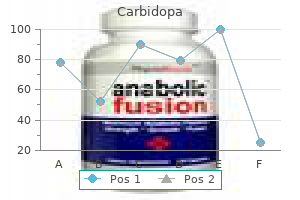
Order carbidopa 110 mg without prescriptionSeizures also can happen in patients with intracerebral bleeding medicine cabinet shelves discount generic carbidopa uk, but less so with main bleeding affecting the basal ganglia and thalamus treatment algorithm buy discount carbidopa 125 mg on-line. Edema or mass effect of the bleeding can produce manifestations primarily based on location and affected structure 5 medications for hypertension buy carbidopa 110 mg otc. Anterior putaminal hemorrhage might produce hemiparesis of the other aspect of the physique medications and grapefruit buy generic carbidopa 125mg, whereas posteriorly located bleeding is more more likely to cause discount in sensory notion, but no change in consciousness occurs. Also, an attention-grabbing correlation exists between the intensive space of distribution of this artery and the increase within the vulnerability to an infection. Lacunar infarcts and possible dying as a result of rupture of the lenticulostriate artery could occur in hypertensive people. It provides the idea pedunculi of the midbrain and the lateral geniculate nucleus. It continues rostrally to enter the inferior horn of the lateral ventricle via the choroid fissure and supply the choroid plexus. In addition, it provides blood supply to the hippocampal and dentate gyri, inner capsule, optic tract, optic radiation, central a part of the midbrain, as properly as the posterior limb of the interior capsule. The posterior communicating artery arises from the inner carotid artery and contributes to the arterial circle of Willis and supplies blood supply to the hypothalamus, optic tract, medial thalamus, walls of the third ventricle, and tuber cinereum. It runs superior to the oculomotor nerve, a relationship that bears scientific significance. An aneurysm that develops in this artery might produce indicators of oculomotor palsy (see Cranial Nerves, Chapter 11). Occlusion of 1 or each inner carotid arteries (at the level of carotid siphon) prompts the collateral circulation between the meningeal branches of the exterior and the interior carotid arteries. Collateral circulation also develops between branches of the lenticulostriate arteries. As a result of this anastomosis, one cerebral hemisphere is supplied with blood via a network of vessels (transdural anastomosis) resembling the "rete mirabile" of decrease mammals. This anastomosis could also be detected in Moyamoya syndrome via angiography as a puff of smoke. It was originally described in Japan and later within the West and is seen in association with neurofibromatosis, sickle-cell anemia, retinitis pigmentosa, Down syndrome, and Fanconi anemia. There is marked overgrowth of the tunica intima inward along with thrombotic plaques. Patients with this situation usually exhibit convulsions, severe headache related to subarachnoid hemorrhage, alternating hemiplegia, aphasia, dyskinesia, visible and cognitive issues, numbness, and other variable neurological disorders. Surgical revascularization may be required to restore normal blood move to the brain and meninges. It is separated from the superior cerebellar artery by the oculomotor nerve and extra laterally by the trochlear nerve, a relation that has significant medical value. It encircles the cerebral peduncle and travels on the upper surface of the tentorium cerebelli and also provides the brain hemispheres. However, in 25% of individuals, one of many posterior cerebral arteries could come up from the internal carotid artery, changing the posterior speaking department. Venous blood from the superior, upper lateral and medial surfaces of the cerebral hemispheres is drained through quite a few superior cerebral veins that open into the superior sagittal sinus. It is extremely vital to note that the anterior group of superior cerebral veins open at a proper angle to the superior sagittal sinus, whereas the posterior group assumes a extra indirect path, in opposition to the current created by the blood in the dural sinuses. The inferior cerebral veins drain the orbital, frontal, and temporal gyri and open into the transverse sinus or the cavernous sinus, whereas the superficial middle cerebral vein runs across the lateral cerebral fissure to open into the cavernous or sphenoparietal sinus, draining the world around the lateral fissure. Two anastomotic veins interconnect the above-mentioned superficial cerebral veins. These connecting veins are comprised of the superior anastomotic vein of Trolard connecting the superior cerebral and superficial center cerebral veins to the superior sagittal sinus and the inferior anastomotic vein of Labbe that connects the middle cerebral vein to the transverse sinus. This vessel connects to the inner carotid artery by way of the posterior communicating artery. After providing blood to the midbrain and portions of the occipital and temporal lobes, the posterior cerebral artery divides into posterior temporal and inner occipital branches. There are additional (posteromedial) branches from the posterior cerebral artery that pierce the posterior perforated substance and supply the globus pallidus, lateral wall of the third ventricle, and anterior thalamus. Posterior choroidal branches supply the inferior horn of the lateral ventricle and choroid plexus of the third ventricle. Posterolateral branches from the posterior cerebral artery provide the posterior and the paramedian thalamus, including the intralaminar, midline, and dorsomedial nuclei and the medial geniculate body.
Cheap 300mg carbidopa with amexThe amplitude of convergence medications given for bipolar disorder cheap carbidopa 125 mg otc, due to this fact medicine 3 sixes 125mg carbidopa, consists of a negative portion and a positive portion medications like prozac cheap 125mg carbidopa otc, which vary with every distance of the thing fixated treatment erectile dysfunction buy carbidopa with mastercard. The convergence synkinesis is so coordinated that the vitality exerted is accurately divided between the 2 medial recti. Summary An understanding of the anatomy, physiology and neural control of the extraocular muscular tissues is important for the medical applications of examination, analysis and therapy of sufferers with ocular motility issues. The superior oblique originates from the lesser wing of sphenoid superomedial to the annulus of Zinn and the inferior indirect muscle from the orbital flooring at a location vertically beneath the trochlea. Both oblique muscular tissues have an indirect insertion behind the equator of the eye within the superotemporal and inferotemporal quadrant of the eye, respectively. The lateral rectus is supplied by the sixth cranial nerve, the other three recti, the inferior indirect and the levator palpebrae superioris are provided by the third nerve and the superior oblique by the fourth nerve. Eye movements are of various varieties such as saccades, pursuit, voluntary, involuntary and so on. The supranuclear control of eye actions may be very complicated, however broadly one should know that there are numerous centres in the cerebral cortex and mind stem, every controlling various varieties of actions and transmitting alerts to other centres for perfect coordination and the ultimate command passes to the motor nuclei within the mind stem in order that the motor impulses may be executed via the suitable nerves and muscles. The ideas of fixation and binocular vision help to perceive the greatest way visible information obtained individually from the 2 eyes is processed to give an built-in picture within the mind which is projected in space to give the ultimate image. Hence, with an emmetropic particular person, the amount of convergence, reckoned in metre angles, is similar as the quantity of accommodation reckoned in dioptres. Just as the difference within the quantity of lodging between the far point and the close to point is known as the amplitude of lodging, the difference in convergence between the far factors and the close to level is known as the amplitude of convergence. Clinically, convergence may be examined roughly by making the affected person fix a finger or pencil which is progressively introduced nearer to the eyes in the midline. The eyes should be capable of maintain convergence when the item is eight cm (3� inches) from the eyes. If outward deviation of 1 eye happens before this level is reached, the power of convergence is poor. More correct measurements can be made by devices, held in entrance of the eyes, in which a vertical pointer slides alongside a scale. In this case, the prism is directed base outwards; the strongest prism that can thus be used with out inducing diplopia when a distant object is regarded, is a measure of the amplitude of convergence. In cases with comitant squint, as opposed to incomitant squint, although the eyes are misaligned, they keep their abnormal relation to one another in all instructions of gaze. In comitant squint the efferent pathways are normal and can nonetheless preserve coordination of the eyes, but either the afferent path is defective (usually due to poor visual acuity owing to a defect within the eye) or the central mechanism mediating the fixation and fusional reflexes is undeveloped or has broken down. In paralytic squint the afferent pathways and centres are intact, but the efferent mechanism breaks down. The truth remains, nonetheless, that no principle of the fundamental causation has but been advanced which satisfactorily explains the situation. Nevertheless, many contributory components within the aetiology of comitant strabismus are identified, and a proper appreciation of them is essential for rational treatment. If the defect exists from start or adolescence, the cortical cells normally subserving both eyes might by no means develop binocular connections in order that fusion is impossible. Disturbances in muscular equilibrium, usually due to a congenital malinsertion or defective development of one or more of the extrinsic muscle tissue, might act in the identical method, the squint being perhaps preceded by a period of heterophoria throughout which fusion was maintained. These relationships between the refractive condition and path of the squint are, nonetheless, by no means invariable. If the fusion mechanism is well-developed and the deviation slight, visual alignment could also be maintained in regular circumstances by a continued effort of fusion: the squint is then latent and might solely be made manifest when fusion is made inconceivable (as by covering one eye). If, however, the upkeep of alignment becomes inconceivable, a real or manifest comitant squint develops. Comitant strabismus could also be intermittent (periodic) or fixed, convergent or divergent. Convergent strabismus (esotropia) is extra common in hypermetropes and is more common than divergent squint in Caucasians.
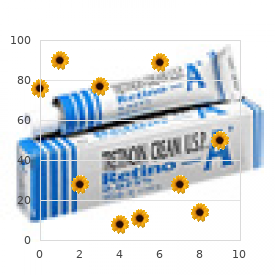
Safe carbidopa 110mgThickness of the coverings also varies with the relative web site of the nerve fiber and speed of conduction medicine 0552 discount carbidopa 110 mg with visa. Generally speaking medications grapefruit interacts with generic 300mg carbidopa with mastercard, thickly myelinated fibers exist in high-pressure websites treatment 7th feb bournemouth buy carbidopa 300mg without a prescription, innervating targets that require fast conduction medications for bipolar purchase carbidopa with american express. Unmyelinated nerve fibers are relatively skinny and show a slower price of conduction. They stay enfolded by the cytoplasm of the Schwann cells, in which every nerve fiber is enfolded by a single Schwann cell to form the Remak bundle. The unmyelinated fibers type the postganglionic autonomic fibers, the olfactory nerve, and the nociceptive C fibers. The ventral rami are principally bigger than the dorsal rami and provide the extremities and thoracic and abdominal partitions. They type elaborate connections inside the cervical, brachial, and lumbosacral plexuses. These connections allow one spinal segment to contribute to the formation of a couple of spinal nerve and likewise make it possible for one muscle to be innervated by multiple spinal segment. The thoracic spinal nerves, for the most part, retain their segmental association and form the intercostal nerves. Pathological circumstances involving the motor neurons within the spinal twine, for instance, poliomyelitis, or brainstem, or their axons (polyneuropathy), might produce spinal nerve dysfunctions by way of demyelination, followed by muscle denervation and paresis or paralysis. Paresis or paralysis may be preceded by visible involuntary contractions of the muscle fibers (fasciculation) involving a motor unit. Fibrillation entails a single muscle fiber, will not be seen by way of skin, and may only be detected via electromyography. The extent and severity of neuronal harm may determine the degree of dysfunction. On that foundation, trauma or neurological illnesses could produce disorders which are categorized into neuropraxia, axonotmesis, and neurotmesis. Neuropraxia is an incomplete, transient, and reversible loss of conduction without the loss of anatomic integrity. It outcomes from transient ischemia or paranodal demyelination subsequent to severe compression. Neuropraxia might produce lack of deep tendon reflexes, and sensory dissociation with preservation of pain and thermal sensations, however with no detectable autonomic dysfunctions. Axonotmesis refers to an entire interruption of an axon and its myelin sheath with preservation of the connective tissue stroma. It is characterised by instant and full loss of all sensory, motor, and autonomic capabilities. The degree of recovery of 226 Neuroanatomical Basis of Clinical Neurology injured nerve fibers (commonly from a closed crushed injury) relies upon the size of the broken segment and its distance from the innervated structure. The part of the axon distal to the site of injury undergoes Wallerian degeneration. After a latent period of approximately 1 month, downward-directed nerve regeneration might happen. Neurotmesis refers to the entire anatomic disruption of neural and connective tissue elements of an axon. Fibrosis and loss of continuity of endoneurial tubules render spontaneous recovery and regeneration virtually impossible and neurosurgical restore a necessity. In common, the medial branches of the dorsal rami of the cervical and upper thoracic spinal nerves provide primarily sensory whereas the lateral branches present motor innervation. The dorsal rami of the sacral spinal nerves exit via the dorsal sacral foramina excluding the fifth sacral nerve, which divides into the medial and lateral branches. The dorsal ramus of the coccygeal nerve joins the lower two sacral dorsal rami to supply the coccygeal pores and skin. Pain associated with compression of spinal nerves is generally confined to the realm of distribution of the affected nerves and will or will not be accompanied by motor dysfunctions. Certain actions similar to flexion, extension, or rotation can aggravate root ache due to a lesion or prolapsed disk involving a number of spinal roots. Since the ventral rami are the primary contributors to the cervical, brachial, lumbar, and sacral plexuses, a detailed dialogue of those plexuses might be helpful at this level. The first cervical spinal nerve forms the suboccipital nerve, which runs in the suboccipital triangle and supplies innervation to the rectus capitis posterior main and minor and the inferior and superior capitis indirect muscles.
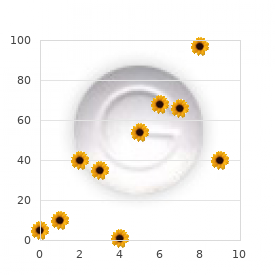
300mg carbidopa otcThe subcommissural organ is positioned ventral to the posterior commissure and on the web site of junction of the third ventricle and cerebral aqueduct treatment genital herpes carbidopa 300mg sale. The cerebral hemispheres symptoms gallstones purchase generic carbidopa on-line, corpus callosum bad medicine buy carbidopa canada, and part of the cerebellum are removed medications vitamins order generic carbidopa on line. It accommodates trace quantities of protein, primarily immunoglobulin and, to a lesser, extent albumin. It additionally accommodates a number of leukocytes and a small amount of glucose (80�120 mg/dL) and potassium (2. This is in distinction to serum, which contains a decrease sodium focus and higher potassium and calcium. A low pH worth might happen in situations associated with acidosis and hypercapnia and in certain pulmonary diseases. Increased protein focus is observed in spinal shock (complete transection of spinal cord) and in cases of extramedullary and intramedullary spinal cord tumors. Note the cuboidal cells of the choroid epithelium and related capillary community. This plexus is innervated by the postsynaptic sympathetic fibers that emanate from the superior cervical ganglion of the sympathetic trunk. Selective prevention of the free entrance of protein and electrolytes from the blood to mind tissue is maintained by the ependymal cells that type tight junctions. Hardened our bodies referred to as psammoma (sand-like), which are composed of concentric rings of calcium carbonate, calcium, and magnesium phosphate, occur normally within the grownup choroid plexus. A vast variety of 5-hydroxytryptamine receptors might affect the blood flow in the choroid plexus. This permits the creation of an environment friendly milieu for the conduction of nerve impulses. It also acts as a buffer to lessen the influence of head trauma (buoyancy effect), provides vitamins to the leptomeninges, and dramatically reduces the burden of the mind. This pressure remains fixed at 50�200 mm of water except a rise or decrease in mind dimension or blood volume occurs. It occurs extra typically in women than men, especially in overweight ladies, however youngsters can additionally be affected. Patients with hyperparathyroidism, Cushing and Addison disease, and iron-deficiency anemia and pregnant women are notably susceptible to the development of this disease. Vomiting, diplopia because of abducens nerve palsy, generalized weak spot, pulsatile tinnitus anosmia, and ataxia are also seen in sufferers with this disease. Lateral ventricle Hydrocephalus may be congenital or acquired: Congenital hydrocephalus (overt-infantile hydrocephalus) happens often in the first few months of life or contained in the uterus. It can be associated with enlargement of the pinnacle, thinning of the scalp, seen superficial vessels, and downward (setting sun sign) place of the eyes. Parinaud syndrome, which displays vertical gaze palsy, may additionally be seen because of the strain exerted on the pretectal space. It is interesting to observe that the cerebral cortex is much less affected than the white matter, and lots of patients survive this situation because of the capacity of the skull to expand. Acquired (occult) hydrocephalus could also be attributable to subarachnoid hemorrhage, postmeningitis, cysticercoids, vascular malformation, in addition to tumors of the third ventricle, thalamus, and cerebral hemispheres. It is characterized by visible papilledema and less distinguished frontal and occipital headache. It displays signs of frontal lobe dysfunctions such as inattentiveness, marked slowness in response, and straightforward distractibility. In older kids and adults with rigid calvaria, gait apraxia and amnesia adopted by dementia and slowing of thought process and, later, urinary incontinence may occur. Imaging of the mind might reveal herniation of the third ventricle, erosion of the sella turcica, and atrophy of the corpus callosum. The onset of this condition is subacute and may cause intellectual deterioration followed by a restriction of motion.
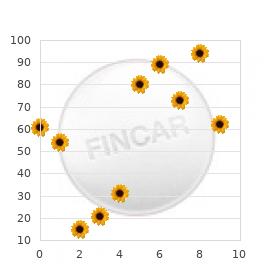
Discount carbidopa online mastercardAtrophy and flattening of the supraspinous and infraspinous fossae in the elderly will not be diagnostic as a end result of medicine identifier pill identification discount carbidopa 110 mg amex losing of these muscle tissue with growing older medicine of the people buy carbidopa 125mg. This will elicit a extreme pain if the suprascapular nerve is entrapped treatment kennel cough order cheap carbidopa on line, particularly inside the suprascapular foramen medicine 8 pill cheap carbidopa 110mg amex. The nerve to the subclavius (C5, C6), because the name implies, supplies the subclavius muscle, which acts as a cushion that prevents rupture of the subclavian artery in clavicular fracture. Pain and paresthesia exacerbated by extension of the forearm at the elbow and eventual impairment of the cutaneous sensation in the lateral half of the forearm also can, though uncommonly, be observed in this injury. Heavy objects positioned on the forearm and supported by the elbow could significantly compress the lateral antebrachial cutaneous department of this nerve. Due to the overlap between sensory branches of the lateral antebrachial cutaneous nerve and the superficial branches of the radial nerve that supply the lateral forearm, sensory deficits will not be outstanding. For the identical purpose, damaged lateral antebrachial nerve may be surgically eliminated and used as a graft. Coracobrachialis could be examined by flexing towards resistance the laterally rotated arm. It pierces the coracobrachialis muscle, runs between the biceps brachii and brachialis where it lies close to the radial nerve, and continues to the forearm, lateral to the tendon of biceps brachii as the lateral antebrachial cutaneous nerve. The musculocutaneous nerve provides the flexors of the elbow similar to coracobrachialis, brachialis, and biceps brachii and offers articular branches to the elbow joint. It additionally offers cutaneous innervation to the lateral side of the forearm via the lateral antebrachial cutaneous nerve. The branch to the coracobrachialis arises earlier, whereas branches that offer the biceps brachii and brachialis emanate from the nerve after piercing the coracobrachialis. The lateral pectoral nerve (C5, C6, C7) is larger than the medial pectoral nerve and passes inferior to the clavicle and throughout the subclavian vessels earlier than it reaches the axillary fossa the place it accompanies the thoracoacromial artery and supplies the pectoralis major muscle after piercing the clavipectoral fascia. The lateral twine provides rise to the lateral root (C5, C6, C7), which joins the medial root from the medial twine and forms the median nerve. Intactness of the lateral pectoral nerve is examined in the supine place by flexing the arm while the forearm prolonged and the contralateral shoulder is pressed towards the examination table. Terminal Branches of medial twine the medial twine provides rise to the medial pectoral, medial brachial, medial antebrachial, and ulnar nerves, as nicely as to the medial root to the median nerve. Integrity of the pectoralis minor can be tested by asking the affected person to extend his arm and move his/her shoulder anteriorly whereas the examiner hand pushes the shoulder in the other way. It may be replaced by Injury to the musculocutaneous nerve, although uncommon, results from a fracture of the humerus, shoulder dislocation, positioning of the arm throughout surgical procedure, entrapment inside a hypertrophied coracobrachialis muscle, and from hereditary neuralgic amyotrophy. Common manifestations of this injury are atrophy of the biceps brachii and flattening of the anterior surface of the arm, weakened flexion of the arm, markedly weakened flexion of the forearm, weakened supination, and instability of the shoulder joint. This nerve travels medial to the brachial artery and basilic vein and provides cutaneous fibers to the medial surface of the distal third of the arm. The anterior branch innervates the skin of the anterior floor of the medial forearm right down to the wrist to connect with the cutaneous branches of the ulnar nerve. The posterior branch provides the corresponding areas on the posterior floor of the medial forearm, establishing communication, in the identical manner, with the sensory branches of ulnar and radial nerves. In the lower medial arm, the ulnar nerve runs between the olecranon and medial epicondyle and then in the ulnar nerve sulcus on the medial epicondyle of the humerus accompanied by the superior ulnar collateral artery. In the proximal and distal thirds of the arm, the ulnar nerve receives blood supply from the adjacent ulnar collateral arteries, making potential to use this phase of the nerve for transplant in evulsion injuries. It then enters the cubital tunnel, which is bounded anteriorly by the medial epicondyle and medially by the medial collateral ligament and fibrous capsule. The roof of the tunnel is shaped by a fibrous band that connects the medial epicondyle to the olecranon and the tendinous origin of the flexor carpi ulnaris. It descends further between the two heads of the flexor carpi ulnaris after which between the flexor carpi ulnaris and medial half of flexor digitorum profundus to which it provides motor innervation. During its course in the forearm, the ulnar nerve is accompanied by the corresponding vessels. Proximal to the wrist, the ulnar nerve offers rise to the dorsal and palmar cutaneous branches.
|


